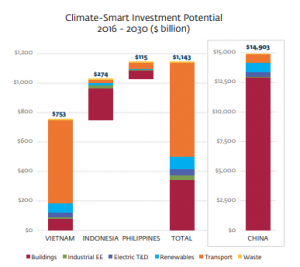The aeronautics sector in China in 2024: growth and business opportunities
The aeronautics sector in China in 2024: growth and business opportunities
Introduction
China’s aerospace sector in 2024 is showing strong growth, underpinned by massive investment in infrastructure and technological advances. As China surpasses pre-pandemic levels in several areas, the industry also offers promising prospects for foreign companies. This article explores the highlights of this recovery and highlights the opportunities for business development in China.
A powerful recovery: key figures for 2024
Passenger Transport and Air Traffic
In 2024, China will set new records with more than 700 million passenger journeys, including 640 million on domestic routes, marking a 14% increase on 2019. The first half of the year saw 350 million passengers carried, a year-on-year increase of 23.5%.
Air freight and performance
Air freight is also on the rise, with 4.17 million tonnes transported in the first half, 27.4% more than in 2023. Load factors reached 82.2%, reflecting optimised operational management.
Opportunities for foreign companies
Partnership-friendly growth
As China aims for technological autonomy, local companies like COMAC are looking for international partners to develop strategic components. This need is opening doors for foreign companies specialising in components, engines and avionics systems.
A dynamic local market
With demand growing rapidly, foreign manufacturers such as Airbus and Embraer are stepping up their presence. Airbus, for example, plans to deliver its A330neo as early as 2025, once it has obtained Chinese certification.
Structuring projects: Jinzhouwan International airport in Dalian: an exceptional ambition
China is investing in ambitious projects to meet the growing demand for air transport. More than 100 new airport projects are planned over the next 10 years, and hubs such as Shanghai Pudong and Guangzhou Baiyun, already among the largest in the world, are seeing their capacity increased.
Among these investments, Jinzhouwan International Airport, currently under construction on an artificial island off the coast of Dalian, is one of the most ambitious projects in terms of airport infrastructure. Designed to become the largest offshore airport in the world, this project illustrates the ingenuity and scale of China’s ambitions in this field.
Features and capabilities
Covering an area of 20.9 km², the airport is designed with four runways and a terminal covering 900,000 m². When it opens, it will be able to handle 43 million passengers a year, with the capacity to expand to 80 million. In addition, it will handle around 1 million tonnes of freight a year, meeting the growing needs of regional and international trade.
Strategic objectives
The project aims to replace the current Dalian-Zhoushuizi airport, which is now saturated, and to become an engine of economic development for north-east China. With strengthened connections to the world’s major cities and business centres, this airport is set to play a key role in attracting investment and facilitating trade.
Technological and environmental advances
Chinese engineers are using advanced techniques to build on complex marine terrain, while incorporating rigorous environmental standards. This includes innovative energy management systems to reduce the carbon footprint.
Timetable and outlook
Work began in 2011 and will reach a crucial stage in 2024 with the completion of the foundation and backfill phases. Entry into service is scheduled for 2035, marking a new era for airport infrastructure in China.
This emblematic project demonstrates China’s determination to maintain its role as world leader in aviation and to support its economic development by diversifying its logistics and transport capacities.
Conclusion: time to act in the Chinese aerospace market
The Chinese aerospace sector in 2024 is fertile ground for visionary companies. With booming infrastructures, record growth and diversified technological needs, this is a key time to invest and get involved. However, to succeed in this market requires meticulous preparation, in-depth knowledge of local dynamics, and reliable partners to navigate a complex but promising environment.
Optimising your market entry strategy: an asset for High-Tech Companies
To penetrate the Chinese aerospace market, particularly in sectors linked to advanced technologies, it is essential to build a targeted partnership strategy and benefit from expert support. Companies specialising in advanced components, new-generation engines or connected avionics systems will find immense potential, provided they master the local complexities.
Full support from VVR International
Working with Chinese players or industry experts helps to overcome the challenges of strict regulations, technological standards and cultural differences. Partners like VVR International provide unique expertise by helping to identify strategic local partners, whether research centres, manufacturers or specialist institutions. Their support also extends to services such as assistance with negotiating contracts and defining action plans tailored to the objectives of innovative companies.
In China, a network approach is essential for effective integration into the technological and industrial ecosystem. This includes :
- Establish technological partnerships to develop solutions tailored to the local market.
- Negotiating strategic agreements with suppliers to integrate efficient local supply chains.
- Set up in industrial and technological clusters, particularly active in regions such as Shanghai and Chengdu, to accelerate collaboration and innovation.
By combining a detailed knowledge of cultural dynamics and business practices with a solid network, high-tech companies can not only reduce risks but also maximise their impact on the Chinese aerospace market. Professional support such as that offered by VVR International becomes a key lever for success in this complex and highly competitive environment.





















